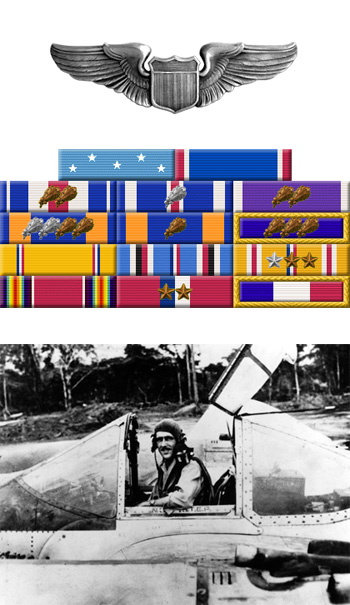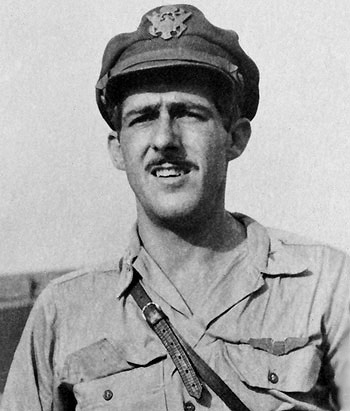
|
Thomas B. McGuire, Jr. |
 |
|||
| Rank, Service | ||||
Major O-4, U.S. Army Air Forces |
||||
| Veteran of: | ||||
|
||||
| Tribute: | ||||
Tommy McGuire was born on August 1, 1920, in Ridgewood, New Jersey. He attended Georgia Tech for three years before entering the Aviation Cadet Program of the U.S. Army Air Forces on July 12, 1941. McGuire was commissioned a 2d Lt and awarded his pilot wings at Kelly Field, Texas, on February 2, 1942, and was then assigned to the 313th Pursuit Squadron of the 50th Pursuit Group at Selfridge Field, Michigan, from February to May 1942. He then joined the 56th Pursuit Squadron of the 54th Pursuit Group at Paine Field, Washington, and served in the Aleutian Islands of Alaska from June to October 1942, and then returning to Hamilton Field, California, until March 1943. Lt McGuire then joined the 9th Fighter Squadron of the 49th Fighter Group in New Guinea, where he served until transferring to the 431st Fighter Squadron of the 475th Fighter Group in July 1943. Capt McGuire commanded the 431st Fighter Squadron from May to December 1944, and then served as Operations Officer of the 475th Fighter Group from December 1944 until he was killed in action in the Philippines on January 7, 1945. During World War II, Maj McGuire was credited with destroying 38 enemy aircraft in aerial combat plus 3 probables and 2 damaged, all while flying the P-38 Lightning. Tommy McGuire's remains were recovered in 1949 and he was buried at Arlington National Cemetery. Fort Dix Army Air Base in Wrightstown, New Jersey, was renamed McGuire AFB in his honor on January 13, 1948. |
||||
|
||||

